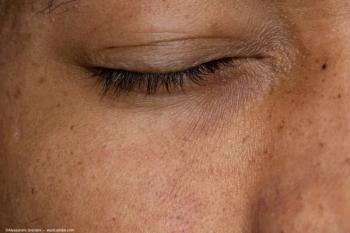
Living with GA: How patients in the US and Western Europe cope
Key Takeaways
- Geographic atrophy significantly impacts patients' daily activities, independence, and mental health, necessitating coping mechanisms.
- The study involved interviews with GA patients in the US and Europe, highlighting the need for further research, especially outside the US.
A recent study reveals how geographic atrophy affects patients' vision and quality of life, highlighting their coping strategies and need for better resources.
A new study in which patients were interviewed regarding their experience with
This knowledge may be valuable in developing accessible educational resources on GA, treatment options, and strategies to enhance quality of life, according to the first study author Nicole Genova, associate director, Patient Partnerships for Astellas Pharma Inc., and colleagues. She described the study at the Association for Research in Vision and Ophthalmology 2025 annual meeting in Salt Lake City.
Genova and colleagues pointed out, “The decreased visual function in patients with GA greatly impacts daily activities, independence, mobility, mental health, and quality of life (QOL).1,2
They also noted that limited qualitative data have been published, and further research on the experience of patients with GA, especially outside the US, is needed.2-4
Study methodology
The investigators sought to understand and document the diagnostic path, symptoms, the impact on the health-related QoL and coping mechanisms that patients with GA engaged in the US and Europe.
Two qualitative studies were conducted, one in the US and one in Europe. Trained interviews conducted 60-minute virtual or telephone interviews with the patients in the patients’ native language. Twenty-six patients were included in the study, 13 in the US and 13 in Europe.
The patients reported contacting a doctor with the complaints of distorted vision, difficulty driving, difficulty reading, seeing flashes of light, blind spots, and blurred vision. Some patients found the doctor visits to be information and help, while others reported that the doctors did not provide information about GA or they appeared to be unsympathetic or dismissive of the patient.
The data showed that 73.1% of patients reported blurry vision, 69.2% reported blind spots, 69.2% experienced difficulty seeing at night, 61.5% had difficulty seeing colors, 53.8% reported distorted vision, and 53.8% reported tired eyes.
Most patients related that they sought information from their doctors about disease progression, potential blindness, and the hereditary risk. They also shared that they struggled to accept the GA diagnosis and feared for the future.
The most frequently reported health-related QOL problems were difficulty reading and driving, fear, and frustration. The data showed that 84.6% reported limitations regarding recreational or leisure time activities, 73.1% activities of daily living, and 69.2% emotional functioning.
“The most common coping mechanism reported by participants in the US study was the use of electronic devices; the most common coping mechanisms reported by European participants were the use of electronic devices, making modifications to their homes, and the use of a magnifier,” the investigators reported. Other coping mechanisms included wearing glasses, audio-focused communication and audiobooks, and using a white cane as a visual indicator of decrease vision.
The investigators concluded, “Participants with GA interviewed in the US, Spain, Germany, and France reported that various vision-related symptoms impacting their health-related QOL and independence. The participants engaged in significant coping mechanisms to live with GA; these burdens lead to participants feeling frustrated in the present and worried about the future. Understanding these experiences could aid in developing accessible educational resources on GA, treatment options, and strategies to enhance quality of life.”
References
Sarda SP, Heyes A, Bektas M, et al. Humanistic and economic burden of geographic atrophy: a systematic literature review. Clin Ophthalmol. 2021;15:4629-4644.
Nielsen MK, Villarruel Hinnerskov JM, Sorensen TL. Geographic atrophy - signs, symptoms, and quality of life. Acta Ophthalmol. 2023;101:896-902.
Carlton J, Barnes S, Haywood A. Patient perspectives in geographic atrophy (GA): exploratory qualitative research to understand families. Br IrOrthopt J. 2019;15:133-141.
Madheswaran G, Ramesh SV, Pardhan S, Sapkota R, Raman R. Impact of living with a bilateral central vision loss due to geographic atrophy-qualitative study. BMJ Open. 2021;11:e047861.
Newsletter
Don’t miss out—get Ophthalmology Times updates on the latest clinical advancements and expert interviews, straight to your inbox.


















































.png)


